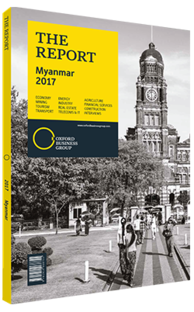Sunil Seth, President, Overseas Agro Traders Association of Myanmar, on boosting the sector’s competitiveness: Interview

Interview: Sunil Seth
What measures could be taken to entice foreign investment in Myanmar’s agriculture sector?
SUNIL SETH: The agriculture sector is extremely important for Myanmar, contributing 41% of GDP. Farmers’ land holdings are small and fragmented. One area the government should consider is allowing contract farming, whereby foreign companies can work directly with farmers to provide better inputs like seeds, nutrients and technical support to improve the quality and productivity of agro-products. Myanmar mostly exports raw agro-products without much value addition. The government could incentivise foreign companies to set up plants for making finished pulses and give tax and export duty benefits to attract foreign investment. It could also explore the possibility of working closely with agriculture universities to bring best practices to Myanmar.
The new Myanmar Investment Law provides incentives for the country’s less-developed regions by providing a seven-year tax break instead of the uniform five years. This should attract attention in states like Sagaing, Chin and Shan, where there is good potential for agro-products. This is a good step taken by the government and should attract foreign investment.
Are there any moves that could help promote the development of the beans and pulses industry?
SETH: Beans and pulses are an important product for Myanmar. They have an export potential of 1. 5m2m tonnes and over $1bn per year. The government should look at investing in better technology and seeds, and at providing finance to farmers at competitive rates. Initiatives like the minimum support price and weather insurance will also motivate farmers to focus more on beans and pulses.
Improvements in infrastructure – such as logistics from Upper Myanmar to Yangon, and reducing costs at Port of Yangon – will make bean and pulse exports more competitive. Many African countries will be competing with Myanmar on pulses in the future. Exports to countries in the Middle East, as well as the UK, the US and Canada, can also be developed.
Local banks can also help by providing letters of credit and other trade finance products, so that this business can be scaled up and can follow standard norms of international trade.
What can be done to ensure that Myanmar exports higher-value-added products?
SETH: The government should focus on higher-value items like high-quality rice for exports to discerning markets, and finished pulses by setting efficient milling machines and food-processing units. The farmers will also get greater income from their produce, making it a win-win situation for all stakeholders in the agricultural value chain. Mechanisation of farming is another area to be looked at to increase productivity. Tractors and other farm equipment are used less in Myanmar than in Cambodia. The government could consider having a special economic zone to focus on the agricultural sector, along the same lines as Thilawa Special Economic Zone, and encourage companies to invest in value addition for agro-commodities.
Where does Myanmar’s agriculture industry have advantages over those of other ASEAN nations?
SETH: Myanmar has a lot of natural resources, including water and fertile soil, as well as a young and hard-working population. The cost of labour is very competitive and farmers have years of experience in cultivating rice, beans and pulses, sesame, ground nuts and so on. Myanmar is also very well located to supply agricultural products to China, India and ASEAN countries, and this puts it in a unique position. With the recent lifting of sanctions by the US government, Myanmar can be a competitive supplier of finished pulses – along with other valueadded agricultural commodities – to the EU and the US.
You have reached the limit of premium articles you can view for free.
Choose from the options below to purchase print or digital editions of our Reports. You can also purchase a website subscription giving you unlimited access to all of our Reports online for 12 months.
If you have already purchased this Report or have a website subscription, please login to continue.

